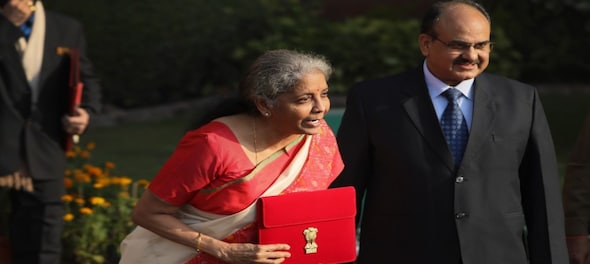
Given the significance of the power sector in economic growth, Budget 2021 announcements for the power sector are in line with ICRA expectations and remain positive for the renewable energy (RE) sector as well.
The infrastructure sector needs large-sized investments, and in this regard, the measures highlighted in the budget to augment the availability of long-tenure debt funding are welcome. These proposals pertain to setting up of a development financial institution, a mechanism to raise tax-efficient zero-coupon bonds by Infrastructure Debt Funds (IDF) as well as to enable the debt financing for Infrastructure Investment Trust (InVT)s from foreign portfolio investors (FPIs). ICRA expects incremental investments of about Rs 3.5-4 lakh crore in renewable energy (RE) alone over the next 4-5 year period, given the large project pipeline, strong policy thrust and improving tariff competitiveness of RE.
The budget also proposes to launch a reforms-based result-oriented scheme with an outlay of over Rs 3 lakh crore which is certainly a positive especially for the state-owned discoms, considering their weak financial position which continues to remain an area of concern for the entire power sector. While the details of the scheme are awaited, timely implementation of such a scheme by the discoms /other stakeholders remain extremely critical. The budget has also talked about the proposed framework to be set up for providing the flexibility of choice of power suppliers for the consumers, which would benefit the consumers in the long run.
However, implementation of the same would likely require reforms in the Electricity Act 2003 and also a political will from state governments. This is due to the fact that the power sector is a concurrent subject and within that, the distribution segment is predominantly owned by state governments. While the liquidity relief scheme as announced by the government earlier in May 2020 is yet to be fully implemented, it remains a short-term measure so as to address the overdue of the discoms towards the generation entities/IPPs as on June 2020. More importantly, the proactive focus by the distribution utilities to ensure the operational improvements (w.r.t. tariff, cost and efficiency levels) remain the critical areas to monitor.
Within the renewable segment, policy thrust by Central government remains strong as also evident from the budget proposals with respect to the capital infusion of Rs 1,000 crore for Solar Energy Corporation of India Ltd (SECI) and Rs 1,500 crore for Indian Renewable Energy Development Authority (IREDA).
This is certainly positive for the entities operating in the renewable energy segment, as it further strengthens the government’s strategic focus on promoting the sector. Further, the proposed launch of Hydrogen Energy Mission 2021-22, demonstrates the government’s resolve to enable greater use of green energy for the generation of hydrogen in the long run. Moreover, an increase in customs duty for solar inverters and lanterns is positive for domestic manufacturers, although it will lead to some increase in the cost of solar generation. There is, however, no mention on the specific policy measures such as the production linked incentives/basic customs duty to support domestic manufacturing of solar cells/modules in the budget. Nevertheless, the overall outlook on renewables remains stable, given the strong policy focus & supportive regulatory framework.
Moreover, the higher capital expenditure by the Indian Railways also to ensure 100 percent electrification by 2023 as well as higher allocation for metros / urban transport infrastructure should augment the demand for electricity and thus remains positive for the power sector. All India electricity demand is expected to grow 6 percent – 7 percent in FY2022 as against an estimated decline of 2 percent – 2.5 percent in FY2021, to be driven by a favourable base effect and expected recovery in demand from the commercial and industrial (C&I) segments. As a result, the all-India thermal PLF though remaining subdued is likely to improve to 57 percent – 58 percent in FY2022 from the estimated level of 53 percent- 54 percent in FY2021.
Given the subdued thermal PLF levels, lack of visibility in the signing of new power purchase agreements (PPAs) for thermal IPPs and modest tariffs in the short-term power market, the outlook on the thermal power generation segment continues to remain negative. In this context, the proposal to set up an asset reconstruction and management company to deal with the stressed assets would enable the banks to focus on financing of new projects and may also help resolve the large stressed asset portfolio in the thermal segment.
Author's views are personal
(Edited by : Aditi Gautam)
First Published: Feb 5, 2021 8:47 PM IST
Check out our in-depth Market Coverage, Business News & get real-time Stock Market Updates on CNBC-TV18. Also, Watch our channels CNBC-TV18, CNBC Awaaz and CNBC Bajar Live on-the-go!


Lok Sabha elections 2024: All you need to know about EVMs and VVPAT; how they work
Apr 20, 2024 1:24 PM
Odisha Lok Sabha elections: Schedule, total seats, Congress candidates and more
Apr 20, 2024 11:39 AM
Lok Sabha Election 2024: Issues raised by Prime Minister Modi have not resonated with people of Tamil Nadu, says Congress
Apr 19, 2024 11:38 PM
West Bengal Lok Sabha elections 2024: A look at Congress candidates
Apr 19, 2024 8:45 PM

